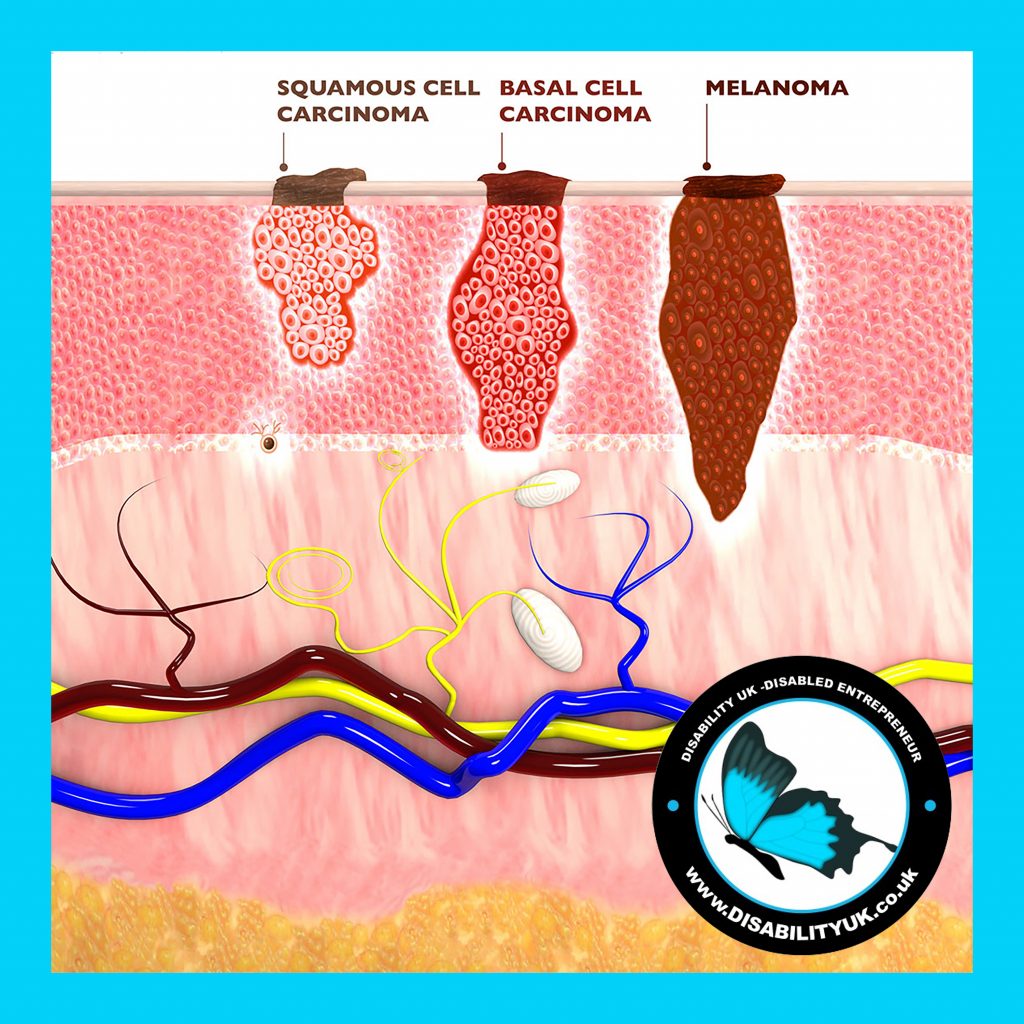
Melanoma Awareness Campaign
The Importance of Spreading Awareness About Melanoma
Melanoma, a type of skin cancer, has been on the rise in recent years, affecting millions of people worldwide. It is essential to spread awareness about this potentially life-threatening disease to promote early detection, and preventive measures, and to debunk misconceptions surrounding melanoma. Through education and understanding, we can empower individuals to take charge of their skin health and reduce the burden of this disease on society.
Understanding Melanoma
Melanoma originates in melanocytes, the cells responsible for producing the pigment melanin, which gives color to our skin, hair, and eyes. When melanocytes develop DNA damage due to overexposure to ultraviolet (UV) radiation from the sun or artificial sources like tanning beds, they can transform into cancerous cells and begin to multiply uncontrollably, forming malignant tumors.
Risk Factors
Several risk factors contribute to the development of melanoma, with excessive UV exposure being the primary cause. Other factors include fair skin, a history of sunburns, a family history of melanoma, having numerous moles or atypical moles, and a weakened immune system.
Spreading Awareness for Early Detection
Raising awareness about melanoma is vital to promote early detection. When detected in its early stages, melanoma is highly treatable, with a significantly higher chance of survival. Awareness campaigns can educate the public about the warning signs of melanoma, known as the ABCDE rule.
Promoting Sun Safety
Spreading awareness about melanoma also involves advocating for sun safety practices. Encouraging individuals to protect their skin from harmful UV rays can significantly reduce the risk of developing melanoma. This includes:
- Using sunscreen: Applying broad-spectrum sunscreen with a high SPF regularly, especially when outdoors, can help shield the skin from harmful UV rays.
- Seeking shade: Limiting sun exposure during peak hours (10 a.m. to 4 p.m.) when the sun’s rays are strongest can reduce the risk of sunburn.
- Wearing protective clothing: Covering up with long-sleeved shirts, wide-brimmed hats, and sunglasses provide added protection.
- Avoiding tanning beds: Artificial sources of UV radiation can be equally harmful and should be avoided.
Fighting Myths and Misconceptions
Spreading awareness is also crucial for dispelling myths and misconceptions related to melanoma. Some people believe that having darker skin provides adequate protection against skin cancer, which is untrue. Melanoma can affect people of all skin tones, although it is more frequently diagnosed in individuals with fair skin.
Additionally, the misconception that tanning is a healthy way to get Vitamin D must be corrected. While Vitamin D is essential for our health, it can be obtained safely through a balanced diet and Vitamin D supplements, without putting oneself at risk of melanoma.
What is Melanoma
Melanoma is a type of skin cancer that develops from melanocytes, the cells responsible for producing melanin, the pigment that gives color to the skin, hair, and eyes. Melanoma is considered the most dangerous form of skin cancer because it has the potential to spread to other parts of the body if not detected and treated early.
Causes of Melanoma: The primary cause of melanoma is prolonged exposure to ultraviolet (UV) radiation from the sun or tanning beds. Other risk factors include having fair skin, a history of sunburns, a family history of melanoma, numerous moles or atypical moles, a weakened immune system, and a personal history of previous melanoma or other skin cancers.
Symptoms of Melanoma: Melanoma often appears as a new mole or a change in an existing mole. It can occur anywhere on the body, but it is most commonly found in areas that are frequently exposed to the sun, such as the back, legs, arms, face, and neck.
It is essential to be vigilant about changes in your skin and moles and seek medical attention if you notice any suspicious signs.
Diagnosis and Treatment: If melanoma is suspected, a dermatologist or a skin specialist will typically perform a skin examination and may perform a biopsy to confirm the diagnosis. Once diagnosed, the treatment options depend on the stage and severity of the melanoma. Surgical removal of the affected area is the most common treatment for early-stage melanoma. In advanced cases, additional treatments like immunotherapy, targeted therapy, radiation therapy, or chemotherapy may be recommended.
Prevention: Taking preventive measures to reduce sun exposure is crucial in lowering the risk of developing melanoma. These measures include wearing protective clothing, seeking shade during peak sun hours, using a broad-spectrum sunscreen with a high SPF regularly, and avoiding the use of tanning beds.
Signs Of Melanoma – ABCDE Rule.
Detecting melanoma early is crucial for successful treatment. Here is a list of signs to watch out for, often described using the “ABCDE” rule:
- Asymmetry: One half of the mole or lesion is different from the other half in terms of shape, size, or color.
- Borders: The edges of the mole are irregular, notched, or blurred, rather than smooth and well-defined.
- Color: The mole displays multiple colors, such as shades of brown, black, red, blue, or white. Uneven distribution of color is also a concerning sign.
- Diameter: Melanomas are usually larger in diameter than a pencil eraser (about 6 mm or 1/4 inch), but they can be smaller as well.
- Evolution: Look for changes in the mole’s appearance over time. This can include changes in size, shape, color, elevation, or symptoms such as itching, bleeding, or crusting.
Other important signs to consider:
- Elevation: Melanomas may be raised or have an uneven surface compared to normal moles.
- Itching or tenderness: A mole that itches or becomes painful may warrant further examination.
- Bleeding or oozing: Any mole that bleeds, oozes, or develops a crust should be checked by a healthcare professional.
- Satellite lesions: Small, additional suspicious spots or moles that appear around the main mole could be a sign of melanoma spreading.
- Family history: If you have a family history of melanoma or other skin cancers, you may be at a higher risk and should be vigilant about any changes in your skin.
It is essential to remember that not all moles or skin irregularities are melanomas, but it’s essential to pay attention to any changes in your skin and consult a healthcare professional or dermatologist if you notice any of these signs or have concerns about a specific mole or lesion. Regular skin checks, self-examinations, and professional evaluations can significantly increase the chances of early detection and successful treatment of melanoma.
How Can You Protect Yourself From Melanoma
Protecting yourself from melanoma involves adopting a combination of preventive measures and regular self-monitoring. Here are some key steps you can take to reduce your risk of developing melanoma:
- Sun Protection: Limit your exposure to ultraviolet (UV) radiation, as excessive sun exposure is a significant risk factor for melanoma. Follow these guidelines: (a) Seek shade: When the sun’s rays are strongest (usually between 10 am and 4 pm), stay in the shade as much as possible. (b) Wear protective clothing: Cover your skin with clothing that offers good sun protection, such as long-sleeved shirts, wide-brimmed hats, and sunglasses that block UV rays. (c) Use sunscreen: Apply broad-spectrum sunscreen with a high SPF (at least 30) generously to all exposed skin, including your face, neck, ears, and the backs of your hands. Reapply every two hours or more frequently if swimming or sweating. (d) Avoid tanning beds: Artificial sources of UV radiation can be just as harmful as the sun. Avoid using tanning beds altogether.
- Perform Regular Skin Checks: Familiarize yourself with your skin and conduct regular self-examinations. Look for any new moles or spots and monitor existing ones for changes in size, shape, color, or texture.
- Get Professional Skin Examinations: Schedule regular skin screenings with a dermatologist, especially if you have a history of sunburns, a family history of melanoma, numerous moles, or fair skin. Regular check-ups can help identify any suspicious skin changes early.
- Protect Children from the Sun: It’s crucial to protect children’s skin as they are more susceptible to sunburns and cumulative sun damage. Encourage them to use sunscreen, wear protective clothing, and seek shade during peak sun hours.
- Be Mindful of Medications: Some medications can increase your skin’s sensitivity to the sun, leading to a higher risk of sunburn. If you are taking any medications, consult your healthcare provider about potential side effects and take appropriate precautions.
- Take Note of Your Family History: If you have a family history of melanoma, inform your healthcare provider, as it may increase your risk. They can provide personalized recommendations and monitor your skin more closely.
- Stay Informed and Educated: Keep up-to-date with the latest information and research on melanoma and sun safety. Being informed can help you make better decisions for your skin health.
Conclusion
The importance of spreading awareness about melanoma cannot be overstated. Early detection through self-examination and regular check-ups, combined with sun safety practices, can save lives and reduce the impact of this aggressive form of skin cancer. By educating individuals about the risk factors, warning signs, and preventive measures, we can work towards a future where melanoma is diagnosed early and treated effectively, ultimately reducing its prevalence and improving patient outcomes. Let us all take on the responsibility of spreading awareness and advocating for healthier choices to protect our skin and the well-being of our loved ones.
Protecting yourself from melanoma requires a proactive approach that involves minimizing UV exposure, performing regular self-checks, and seeking professional skin screenings. By adopting these preventative measures and staying vigilant about changes in your skin, you can significantly reduce your risk of developing melanoma and ensure early detection if any suspicious signs arise. Remember that prevention and early intervention are key to successfully managing this potentially life-threatening skin cancer.
Regular skin self-examinations and professional skin checks are also recommended, especially for individuals with a higher risk of developing melanoma. Early detection and treatment significantly improve the chances of successful outcomes.
My recommendation is to get suncare products and my first port of call is to shop at Boots UK, where they have an extensive range of products and brands.
Further Reading
- Melanoma – types, symptoms, treatment | Macmillan Cancer Support
- Signs and symptoms of skin cancer (tenovuscancercare.org.uk)
- Melanoma: Pictures, Stages, Treatment, Survival Rate, and More (healthline.com)
- Melanoma skin cancer – Symptoms – NHS (www.nhs.uk)
ADVERTISEMENT AFFILIATES WITH BOOTS
**Please note all prices are correct at the time of publishing – Just click the AD to visit the shop!
Boots Skin Cancer Melanoma Campaign
#bootsuk #skincancer #melanoma #melanomaawareness #suncream #soltan #soltankids #abcde #abcderule #ultraviolet #uv #sunburn #moles #spf #spf30
Zena has just graduated in BA Hons Marketing Management at Cardiff Metropolitan University on the 17th July 2024, and plans on doing her Masters later this year.
Zena may look normal to an untrained eye even though she has an invisible disability. Thanks to a great support network she is able to fit into society and can get additional help, whenever she needs it.
Zena aspires to be a role model for young people with Multiple Sclerosis.
Zena works remotely which does not put a strain on her health. She writes articles and posts on an array of subjects, namely health and wellbeing, business, AI. She also does social media management, content creation and digital marketing.













